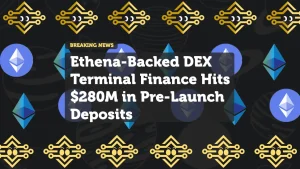
Bitcoin Runes vs. Ethereum Tokens: A Comparative Analysis
As the cryptocurrency space continues to evolve, Bitcoin Runes vs. Ethereum Tokens has become a central debate among developers and investors alike. Both platforms offer unique ways to create and manage digital assets, but they differ significantly in terms of technology, economics, and potential for future growth. This comparative analysis will delve into these differences, highlighting the strengths and weaknesses of each, and discussing how Bitcoin Runes might challenge Ethereum’s established position in the token space.
Technical Differences: Bitcoin Runes vs. Ethereum Tokens
Bitcoin Runes: Simplicity and Security
Bitcoin Runes are a new class of digital assets inscribed directly onto individual satoshis—the smallest unit of Bitcoin. This method leverages Bitcoin’s existing blockchain infrastructure, known for its security and immutability. The simplicity of Bitcoin Runes lies in their direct association with the Bitcoin blockchain, which avoids the complexities of smart contracts. While this simplicity provides a robust layer of security, it also limits the functionality of Bitcoin Runes compared to Ethereum tokens.
Ethereum Tokens: Flexibility and Functionality
Ethereum Tokens are built on the Ethereum blockchain to support smart contracts. This flexibility allows developers to create a wide variety of tokens, each with unique properties and functionalities. From ERC-20 tokens used in decentralized finance (DeFi) to ERC-721 tokens for non-fungible tokens (NFTs), Ethereum’s versatility is unmatched.
Economic Models: Understanding Value Creation
Scarcity and Demand in Bitcoin Runes
The economic model of Bitcoin Runes is heavily based on scarcity. Each Rune is unique, inscribed onto a specific satoshi, and cannot be replicated. This scarcity drives demand, particularly among collectors and investors who value the rarity and permanence of these assets. However, the limited functionality of Runes could constrain their broader adoption, as their utility is largely tied to their status as collectible items rather than versatile digital assets.
Utility and Liquidity in Ethereum Tokens
On the other hand, Ethereum Tokens derive their value from their utility within the Ethereum ecosystem. These tokens power decentralized applications (dApps), enable complex financial transactions, and represent ownership of digital or physical assets. The liquidity of Ethereum tokens is another significant advantage, as they can be easily traded across numerous decentralized exchanges (DEXs). This high level of utility and liquidity makes Ethereum tokens attractive for a wide range of use cases, from simple transactions to sophisticated financial instruments.
Strengths and Weaknesses
Strengths of Bitcoin Runes
- Security: Bitcoin Runes benefit from the unparalleled security of the Bitcoin blockchain, making them highly resistant to hacking and fraud.
- Simplicity: The straightforward nature of Runes, without the need for smart contracts, reduces the risk of technical vulnerabilities.
- Scarcity: The limited supply of Runes, tied directly to Bitcoin, creates a strong value proposition for collectors.
Weaknesses of Bitcoin Runes
- Limited Functionality: The lack of smart contract support means that Runes are less versatile than Ethereum tokens.
- Early-Stage Ecosystem: The ecosystem for Bitcoin Runes is still in its infancy, with fewer tools and platforms available for managing these assets.
Strengths of Ethereum Tokens
- Flexibility: Ethereum Tokens can be programmed with complex functionalities, making them suitable for a wide range of applications.
- Vast Ecosystem: Ethereum has a well-established ecosystem with thousands of dApps, wallets, and exchanges supporting its tokens.
- Liquidity: Ethereum tokens benefit from high liquidity, making them easier to trade and use in various DeFi applications.
Weaknesses of Ethereum Tokens
- Security Risks: The complexity of smart contracts introduces vulnerabilities that have been exploited in the past.
- Scalability Issues: Ethereum has faced challenges with network congestion and high gas fees, though upgrades like Ethereum 2.0 aim to address these issues.
The Potential for Bitcoin Runes to Challenge Ethereum’s Dominance
Can Bitcoin Runes Disrupt Ethereum?
Whether Bitcoin Runes can challenge Ethereum’s dominance in the token space hinges on several factors. The simplicity and security of Runes appeal to investors seeking a safe, long-term store of value. The Bitcoin blockchain would need to evolve to support more complex functionalities, or new layers would need to be developed on top of Bitcoin to facilitate smart contracts and dApps.
The Role of Innovation and Adoption
For Bitcoin Runes to gain ground on Ethereum, there must be significant innovation within the Bitcoin ecosystem. This includes developing new tools, platforms, and services that make Runes more functional and accessible. Adoption will also play a critical role—if more users, developers, and platforms begin to support Bitcoin Runes, their competitive edge could strengthen. However, Ethereum’s established position and ongoing upgrades, like the shift to Ethereum 2.0, make it a formidable opponent.
Implications for the Broader Crypto Ecosystem
Competition Driving Innovation
The competition between Bitcoin Runes vs. Ethereum Tokens could drive innovation across the entire crypto ecosystem. As these two platforms vie for dominance, we may see new technologies and applications that push the boundaries of what digital assets can achieve. This competition could also lead to more interoperability between different blockchains, benefiting the broader community by creating a more connected and efficient digital asset landscape.
Impact on Investors and Developers
For investors, this competition presents both opportunities and risks. The emergence of Bitcoin Runes offers a new asset class with the potential for significant returns, but also with uncertainties due to the nascent state of the ecosystem. Developers might find themselves choosing between the security and simplicity of Bitcoin Runes and the established ecosystem of Ethereum tokens. The outcome of this competition could shape the future of digital assets for years to come.
Conclusion: Bitcoin Runes vs. Ethereum Tokens—Which Will Prevail?
The battle between Bitcoin Runes vs. Ethereum Tokens is just beginning, with each platform offering distinct advantages and challenges. While Ethereum’s flexibility and vast ecosystem make it a powerful force in the digital asset space, the security and simplicity of Bitcoin Runes present a compelling alternative. As both platforms evolve, the ultimate winner may not be clear-cut, but rather a coexistence where each serves different needs within the broader crypto ecosystem. For investors and developers, staying informed and adaptable will be key to navigating this dynamic landscape.
















